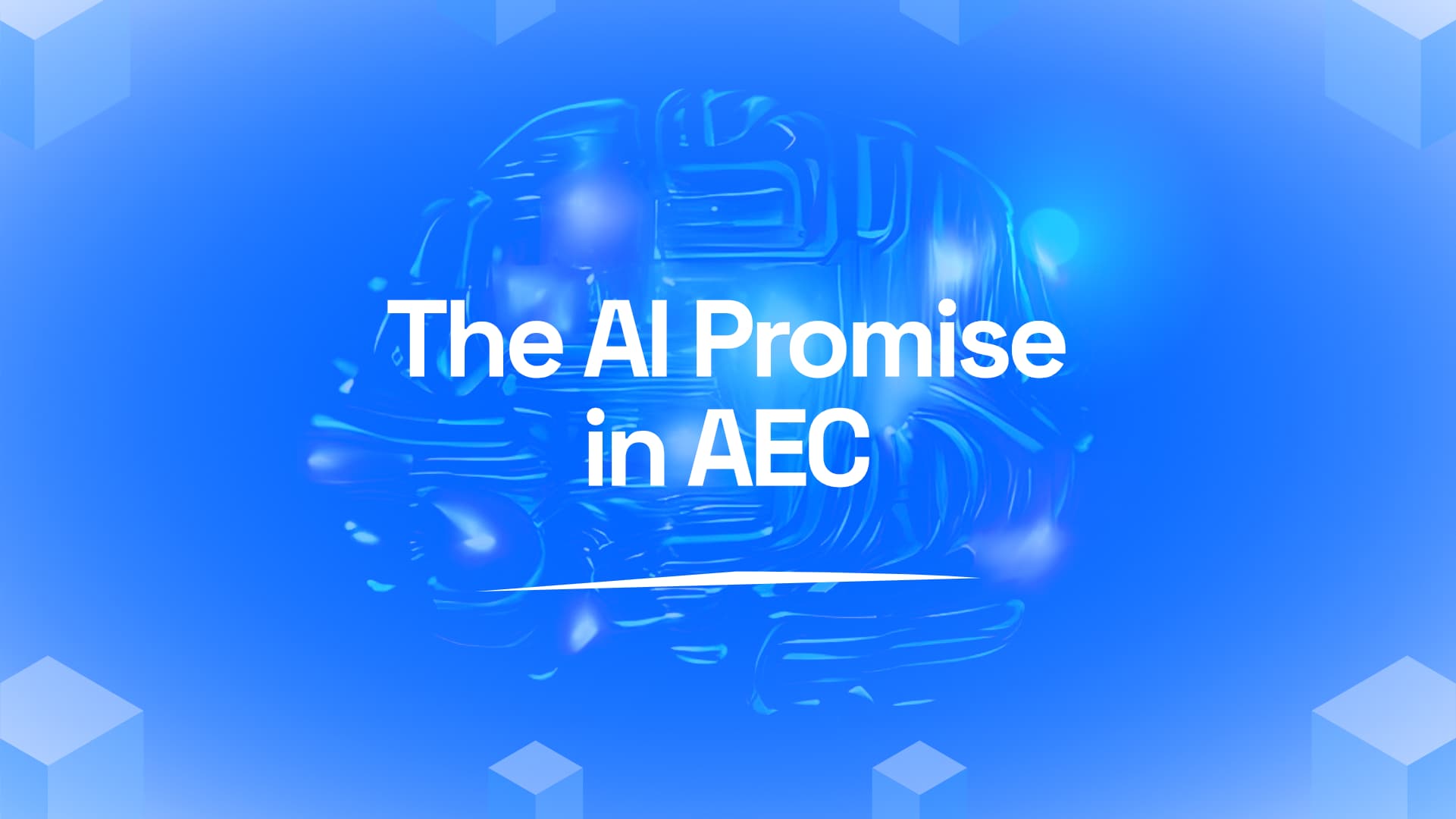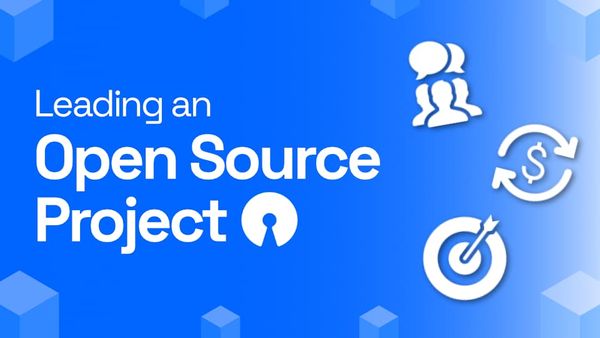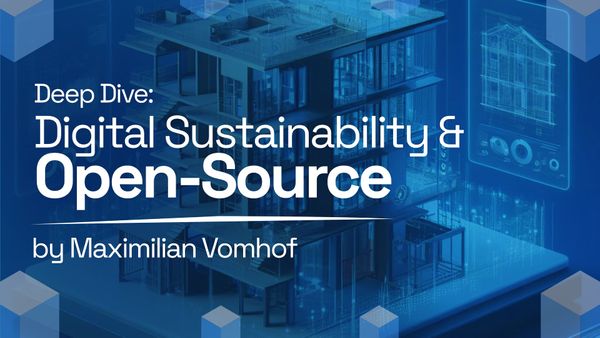Welcome to part 6 of our SpeckleCon series. Here’s an overview of the series so far:
- Part 1: Breaking the Misconceptions of OSS
- Part 2: Innovating Beyond Zero-Sum
- Part 3: Rethinking the One Truth Fallacy
- Part 4: What Is Your Data Strategy?
- Part 5: Contributing to the OSS Ecosystem
- Part 6: The AI Infrastructure <— this post
The AI Promise in the AEC Industry
AI has been fuelling various use cases across many industries, leading to higher expectations for what it can achieve in the AEC industry. Rightfully so. The potential is undoubtedly vast: a multi-trillion dollar market meets an industry that needs to overcome years of efficiency stagnation.
::: tip
According to a 2019 study, the global value of AI in the construction market is projected to reach $4.51 Billion by 2026. Even more impressively, AI is expected to add a gross value of $520 billion to the construction industry by 2035, making up approximately 19% of the industry.
:::
AI will add value across the AEC ecosystem.
- Site Identification: AI algorithms can analyse multiple variables like land cost, proximity to resources, and regulatory constraints to recommend the most optimal construction sites.
- Generative Design: Through AI, designers can input specific design goals and constraints, and the software generates optimised design alternatives, improving efficiency and reducing costs.
- MEP (Mechanical, Electrical, Plumbing) Planning: AI can automate the highly complex task of MEP coordination, identifying clashes and offering optimal pathways for each system. 👋 Augmenta
- Project Management: Predictive AI-powered predictive analytics can forecast project delays and recommend adjustments to keep things on track. 👋 Alice
- Actual Construction: Robotics and AI can work hand-in-hand in actual building tasks, from bricklaying to material handling, making the construction phase more efficient.
- As-built Progress Tracking: Real-time tracking and quality assessment of ongoing construction projects. Transforming Point Clouds to 3D Models. 👋 OpenSpace
- Building Operations: Post-construction, AI can be instrumental in building management systems, optimising energy use, and even predictive maintenance.
The Data Gap
The promise of AI in the AEC industry is too good to be ignored. Unfortunately, the promise is also too good to be true - just yet. AI needs data to learn and make informed decisions. It relies on diverse, high-quality data to train algorithms and improve performance. Additionally, AI often requires computing power and advanced algorithms to process data effectively.
The actual bottlenecks in leveraging AI in the AEC industry are rooted in something other than computing power and advanced algorithms but in data availability and the associated hidden costs. AEC firms often find it impossible or prohibitively expensive to supply algorithms with the necessary data in the right amount, quality, and time. This is not just about 3D data; it applies to all forms of data crucial to the industry. Data often resides in hundreds of proprietary silos in incompatible formats owned by disparate stakeholders. Adding complexity, each new construction project often introduces a unique structure for data exchange within the project team. The industry, already grappling with low margins, can ill afford to lower these challenges further by employing an army of data wranglers.
The solution is more complex than relying on hard-pressed engineers and architects armed only with Zapier and a Dropbox account. These approaches would merely compound the problem, adding new layers of operational costs, poor data quality, and potential compliance violations. In short, resolving the data gap is more complex than it may appear and requires a more refined solution than currently available mainstream options.
Speckle Builds The AI Infrastructure
At Speckle, we developed a unified data layer that allows users to bridge the 3D data gap in real-time. Our Connectors go beyond simplifying complex 3D models; they serve as a dynamic pipe for granular data and metadata within and outside the traditional BIM framework. From material specifications to real-time Internet of Things (IoT) sensor data and collaboration metadata, our platform is designed to bring all relevant data streams into a centralised, accessible location. By building this extensive and versatile data infrastructure, we are making AI applications practical and effective, fundamentally altering the AEC landscape for the better.
In this extended data environment, we are not just solving the problem of proprietary lock-in, we are creating a future where AI algorithms have the rich, diverse datasets they need to transform AEC workflows. Doing so enables you to transcend the limitations of data silos and broken collaboration.
Not a Trap!
At Speckle, our adoption of open-source principles is not a selling point, it is a strategic commitment to ensuring you retain control over your data. By affording this level of data sovereignty, we enable you to specify where your data resides, who can access and modify it, and, importantly, what algorithms, including AI, can be applied.
This approach contrasts with the prevalent industry practice of bundling AI capabilities as another vendor-controlled, fee-based offering. Our commitment to open-source sidesteps this pitfall, allowing for a more customised application of emerging technologies. It fosters an environment where businesses can intelligently deploy AI cost-effectively and precisely tailored to their unique needs.
What’s Next?
Join us at SpeckleCon: our virtual online conference, where we will focus on unlocking data to fuel collaboration, automation, and connectivity across all design workflows.
Over two days, you’ll participate in talks and workshops with fellow designers, coders, and entrepreneurs. Together, we will explore and build the tools and workflows you need to deliver and create value at scale.
Subscribe to our newsletter for more content like this:



